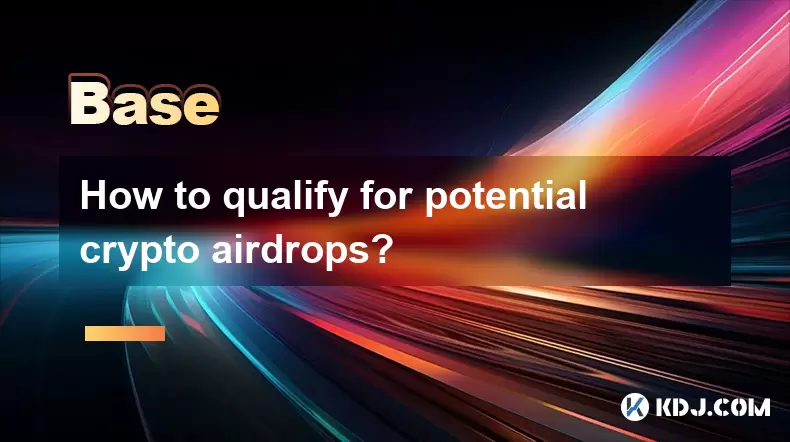-
 Bitcoin
Bitcoin $118900
0.42% -
 Ethereum
Ethereum $3710
-2.88% -
 XRP
XRP $3.513
-2.96% -
 Tether USDt
Tether USDt $1.000
-0.01% -
 Solana
Solana $203.0
3.65% -
 BNB
BNB $765.5
-1.29% -
 USDC
USDC $0.9998
0.00% -
 Dogecoin
Dogecoin $0.2671
-4.18% -
 Cardano
Cardano $0.8817
-3.63% -
 TRON
TRON $0.3139
-0.64% -
 Hyperliquid
Hyperliquid $44.34
-5.45% -
 Stellar
Stellar $0.4637
-4.08% -
 Sui
Sui $3.908
-2.59% -
 Chainlink
Chainlink $19.34
-2.62% -
 Hedera
Hedera $0.2712
-3.77% -
 Avalanche
Avalanche $24.97
-4.13% -
 Bitcoin Cash
Bitcoin Cash $519.8
-1.48% -
 Shiba Inu
Shiba Inu $0.00001518
-3.74% -
 Litecoin
Litecoin $115.6
-2.21% -
 Toncoin
Toncoin $3.460
3.68% -
 UNUS SED LEO
UNUS SED LEO $8.977
-0.07% -
 Polkadot
Polkadot $4.460
-2.96% -
 Uniswap
Uniswap $10.53
-5.43% -
 Ethena USDe
Ethena USDe $1.001
0.01% -
 Monero
Monero $323.6
-0.36% -
 Pepe
Pepe $0.00001379
-2.60% -
 Bitget Token
Bitget Token $4.772
-3.90% -
 Dai
Dai $0.9999
0.00% -
 Aave
Aave $307.5
-6.66% -
 Bittensor
Bittensor $441.8
0.84%
How to choose the web3 wallet entrance
To navigate the rapidly evolving landscape of Web3 wallets, one should delve into considerations like needs assessment, wallet type evaluation, feature assessment, established platforms, user reviews, security measures, interface usability, compatibility, transaction fees, and customer support.
Oct 20, 2024 at 02:48 am

How to Choose the Web3 Wallet Entrance
As Web3 develops rapidly, various applications emerge, driving burgeoning demand for different types of wallets. With an array of options available, users may face challenges in selecting the optimal wallet entrance. To aid in making informed decisions, here's a comprehensive guide on how to choose the most suitable Web3 wallet entrance:
1. Consider Your Needs
Determine your primary purposes for using a Web3 wallet. Do you need it primarily for storing assets, transacting, or interacting with decentralized applications (dApps)? Identifying your specific requirements will help you narrow down the search.
2. Evaluate Different Types of Wallets
Web3 wallets come in various forms, each with its pros and cons:
a. Custodial Wallets: Centralized platforms control private keys, offering convenience but sacrificing user control.
b. Non-Custodial Wallets: Users maintain complete control over their private keys, ensuring greater security but requiring technical proficiency.
3. Assess Features and Functionality
Consider the features offered by different wallets. Essential functions include secure storage, transaction support, dApp compatibility, and customer support.
4. Explore Established Platforms
Reputable platforms provide security, reliability, and user-friendly interfaces. Consider wallets with established industry track records.
5. Read Reviews and Compare
Seek input from experts and users through reviews and comparisons. This provides valuable insights into the performance, reputation, and user experience of specific wallets.
6. Prioritize Security and Reliability
Prioritize security measures such as two-factor authentication, multiple signatures, and transaction encryption. Also, check for platform security audits and industry certifications.
7. Choose a User-Friendly Interface
The wallet should offer an intuitive and easy-to-use interface to facilitate seamless navigation, especially for beginners.
8. Consider Platform Compatibility
Ensure the wallet is compatible with the devices, operating systems, and dApps you plan to interact with. Interoperability can enhance your user experience.
9. Evaluate Transaction Fees
Compare transaction fees charged by different wallets. Consider factors such as the blockchain network, transaction speed, and fee structure.
10. Seek Customer Support
Prompt and reliable customer support can be crucial, especially during troubleshooting or account recovery situations. Opt for wallets with responsive and knowledgeable support teams.
Disclaimer:info@kdj.com
The information provided is not trading advice. kdj.com does not assume any responsibility for any investments made based on the information provided in this article. Cryptocurrencies are highly volatile and it is highly recommended that you invest with caution after thorough research!
If you believe that the content used on this website infringes your copyright, please contact us immediately (info@kdj.com) and we will delete it promptly.
- Dianne Smith, a Spanish Doubloon, and JM Mason: A Pike County Tale
- 2025-07-23 08:30:13
- MoonBull vs. Turbo: Who Wins the Crypto Meme Coin Race in 2025?
- 2025-07-23 08:30:13
- PNC Bank & Coinbase: Banking on Crypto's Future, NYC Style
- 2025-07-23 06:30:12
- Ruvi AI: The Next Avalanche Riding the AI and Blockchain Wave?
- 2025-07-23 06:30:12
- Bullish Cryptos: BlockDAG Leads the Charge, Aptos Integrates WBTC, and More!
- 2025-07-23 07:10:14
- Crypto Coins Under $1 to Watch: BlockDAG, Stellar, Cronos, and Sei
- 2025-07-23 07:10:14
Related knowledge

What is the difference between CeFi and DeFi?
Jul 22,2025 at 12:28am
Understanding CeFi and DeFiIn the world of cryptocurrency, CeFi (Centralized Finance) and DeFi (Decentralized Finance) represent two distinct financia...

How to qualify for potential crypto airdrops?
Jul 23,2025 at 06:49am
Understanding What Crypto Airdrops AreCrypto airdrops refer to the distribution of free tokens or coins to a large number of wallet addresses, often u...

What is the difference between a sidechain and a Layer 2?
Jul 20,2025 at 11:35pm
Understanding the Concept of SidechainsA sidechain is a separate blockchain that runs parallel to the main blockchain, typically the mainnet of a cryp...

What is the Inter-Blockchain Communication Protocol (IBC)?
Jul 19,2025 at 10:43am
Understanding the Inter-Blockchain Communication Protocol (IBC)The Inter-Blockchain Communication Protocol (IBC) is a cross-chain communication protoc...

How does sharding improve scalability?
Jul 20,2025 at 01:21am
Understanding Sharding in BlockchainSharding is a database partitioning technique that is increasingly being adopted in blockchain technology to enhan...

What is the "crypto trilemma" of scalability, security, and decentralization?
Jul 19,2025 at 06:28pm
Understanding the Concept of the Crypto TrilemmaThe crypto trilemma refers to the challenge of simultaneously achieving scalability, security, and dec...

What is the difference between CeFi and DeFi?
Jul 22,2025 at 12:28am
Understanding CeFi and DeFiIn the world of cryptocurrency, CeFi (Centralized Finance) and DeFi (Decentralized Finance) represent two distinct financia...

How to qualify for potential crypto airdrops?
Jul 23,2025 at 06:49am
Understanding What Crypto Airdrops AreCrypto airdrops refer to the distribution of free tokens or coins to a large number of wallet addresses, often u...

What is the difference between a sidechain and a Layer 2?
Jul 20,2025 at 11:35pm
Understanding the Concept of SidechainsA sidechain is a separate blockchain that runs parallel to the main blockchain, typically the mainnet of a cryp...

What is the Inter-Blockchain Communication Protocol (IBC)?
Jul 19,2025 at 10:43am
Understanding the Inter-Blockchain Communication Protocol (IBC)The Inter-Blockchain Communication Protocol (IBC) is a cross-chain communication protoc...

How does sharding improve scalability?
Jul 20,2025 at 01:21am
Understanding Sharding in BlockchainSharding is a database partitioning technique that is increasingly being adopted in blockchain technology to enhan...

What is the "crypto trilemma" of scalability, security, and decentralization?
Jul 19,2025 at 06:28pm
Understanding the Concept of the Crypto TrilemmaThe crypto trilemma refers to the challenge of simultaneously achieving scalability, security, and dec...
See all articles

























































































